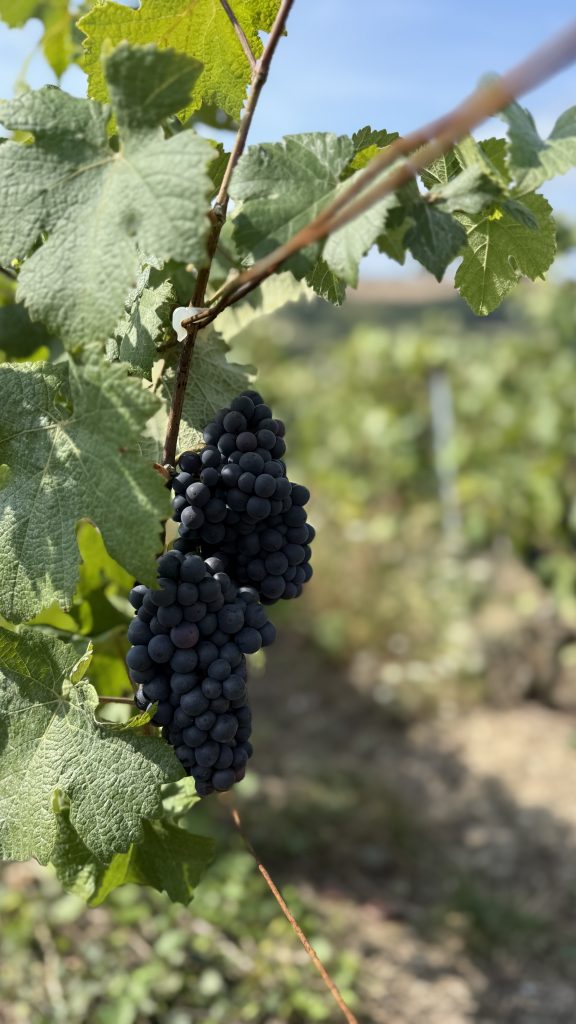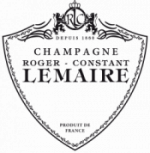Discover our unique winemaking method and
our dedication to preserving the environment.
This section presents the exclusive winemaking method of Champagne Roger-Constant Lemaire, focused on preserving natural acidity, as well as our ecological commitment — with no herbicides, insecticides, or acaricides — ensuring both quality and respect for the environment.
Our approach to champagne production.
Discover our unique winemaking approach, preserving natural acidity through the absence of malolactic fermentation, while respecting the environment.
Every step, crucial in the making of Champagne, must be carried out with great precision.

1
Step 1: The harvest
A key moment of the year, the harvest is carried out exclusively by hand to preserve the integrity of the grape clusters.
Each gesture is precise, respectful of both vine and fruit, ensuring a raw material of impeccable quality.
2
Step 2: The alcoholic
fermentation
Once pressed, the juices are transferred to our
temperature-controlled stainless steel tanks, where alcoholic fermentation takes place.
This is where the natural sugars in the grapes are transformed into alcohol, already revealing the identity of each cuvée.
3
Step 3: Avoiding malolactic fermentation
For over 20 years, we have deliberately avoided this practice.
This bold choice preserves the grape’s original freshness, its vivacity, and aromatic purity, giving our Champagnes their unique character.
4
Step 4 : The tirage
The following spring comes the moment of the tirage.
The still wines are bottled with the addition of a liqueur de tirage, triggering the second fermentation in the bottle.
It is this process that gives rise to the characteristic effervescence.
5
Step 5: Aging in the cellar
The bottles rest in our cellars for several years, far longer than cuvées made with malolactic fermentation.
The slow evolution on the lees develops finesse, complexity, and depth.
Each cuvée rests in darkness and cool conditions until it reaches perfect balance.
6
Step 6: Disgorging
The final key step, disgorging consists of expelling the sediment formed during aging.
The bottles then receive their dosage, before being dressed and ready to be enjoyed.
This meticulous craftsmanship ensures champagnes of remarkable elegance and purity.
Why we choose to vinify without malolactic fermentation ?
Discover the benefits of avoiding malolactic fermentation — a process that requires great care but stands as a mark of quality.
Preserving natural acidity
By avoiding this fermentation, we preserve the liveliness and freshness of the grapes, delivering a pure and dynamic tasting experience.
Longer aging in the cellar
Our champagnes rest for many years in the cool, dark cellars. This additional time imparts unparalleled finesse and aromatic complexity.
Extended shelf life potential
Thanks to the absence of malolactic fermentation, our cuvées retain a natural liveliness that allows them to evolve over several decades. After purchase, they can be cellared for 5 to 20 years, continuing their maturation. As living products, they reveal new nuances over time, offering a different experience with each tasting.
Fresher, more mineral champagnes
This unique vinification preserves the grape’s original purity. Our Champagnes are distinguished by their vibrant freshness, lively tension, and mineral elegance — a signature of Maison Roger-Constant Lemaire.

An ecological commitment recognized in the heart of the Champagne terroir
Respecting nature and preserving our terroir are integral to the philosophy of Maison Roger-Constant Lemaire. Certified HEV Level 3 (High Environmental Value) and Sustainable Viticulture in Champagne, we have chosen a responsible viticulture that respects biodiversity.
C’est fluide, élégant et parfaitement cohérent avec le style raffiné et narratif des autres sections de la Maison.
Our vines are cultivated without insecticides, herbicides, or acaricides, promoting natural balance and soil life. Every action is carefully considered to protect the environment and pass on a healthy vineyard to future generations.
Label Sustainable Viticulture in Champagne
Label High Environmental Value level 3

